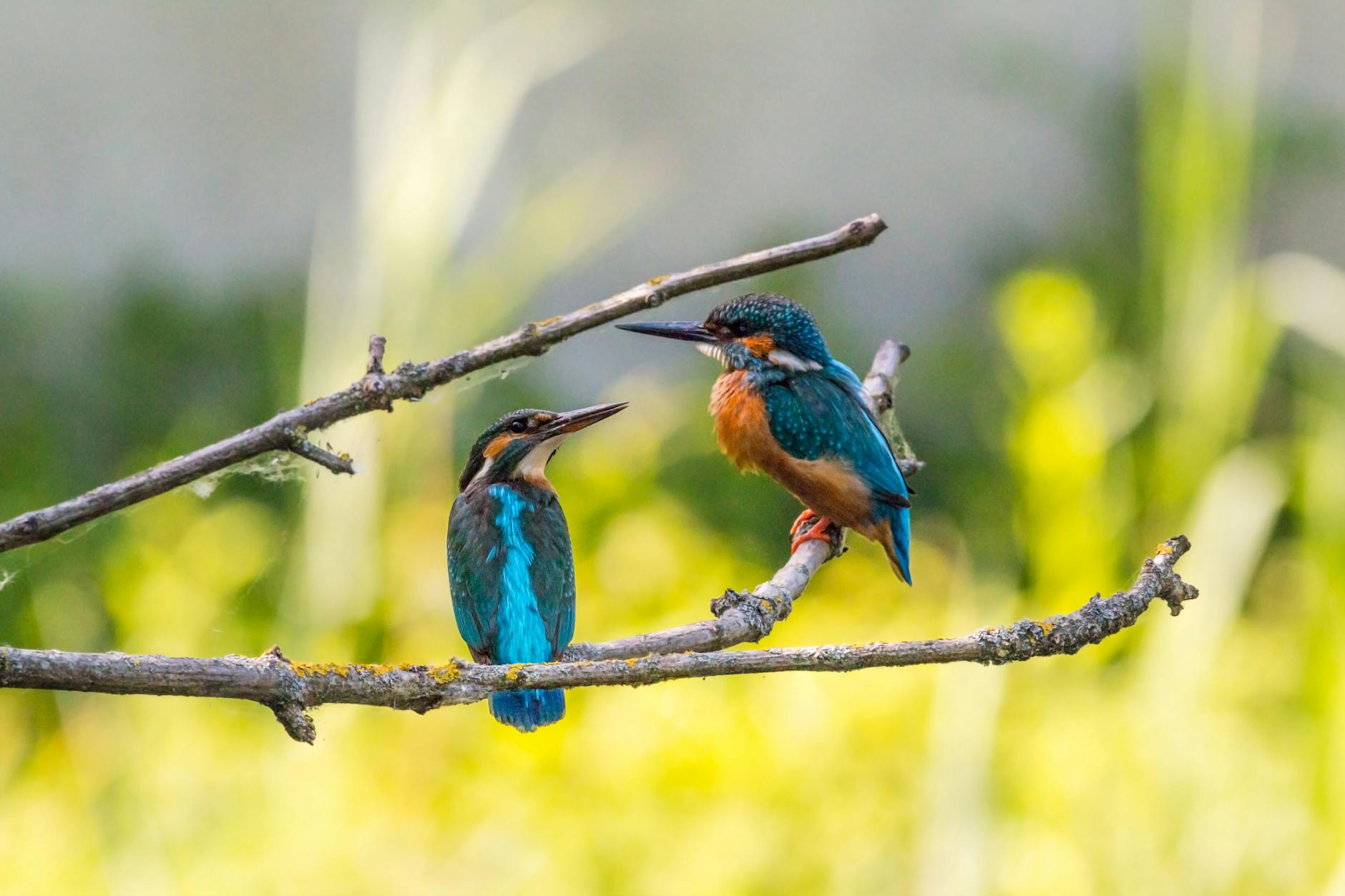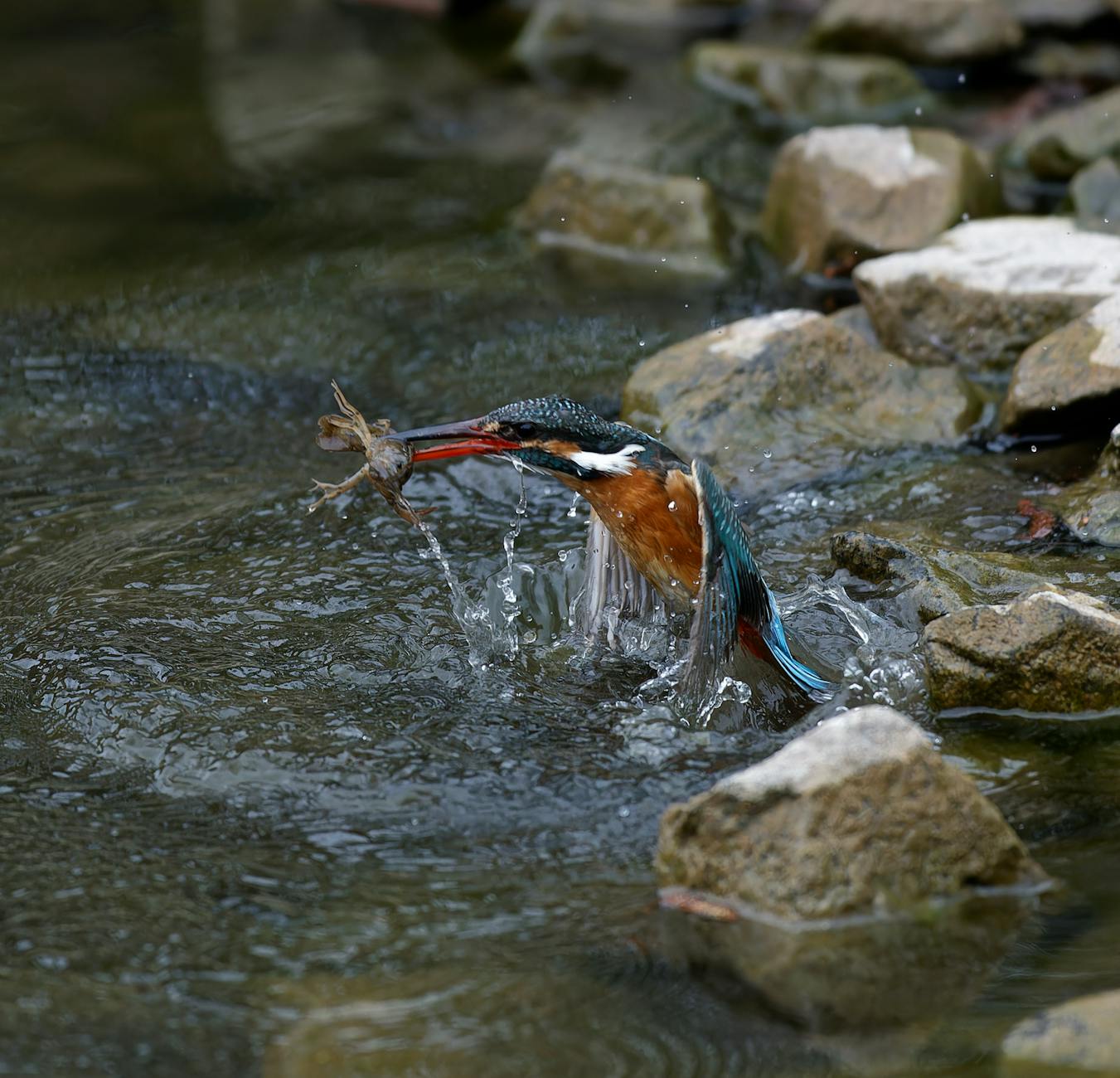How Kingfishers Hunt: Their Unique Skills Uncovered
Kingfishers are remarkable hunters, boasting a set of unique skills that help them thrive in their watery habitats. Have you ever wondered how these vibrant birds catch their prey so effortlessly? With their keen eyesight and agile movements, they can spot fish from above and dive with precision.
In this post, we’ll take a closer look at the fascinating hunting techniques employed by kingfishers. Their adaptations and skills are not only impressive but crucial for their survival. From their striking beaks to their acrobatic dives, every aspect plays a role in their success as hunters. Join us as we uncover the secrets behind their hunting prowess and the remarkable traits that make them stand out in the avian world.
Understanding Kingfisher Anatomy
Kingfishers possess a fascinating anatomy that enhances their hunting capabilities. Each physical feature is designed to optimise their ability to catch fish, making them adept predators in their aquatic habitats. Exploring their beak structure, body shape, and vision adaptations reveals how these birds have evolved to thrive in their environment.
Beak Structure: Explore how the long, pointed beak is adapted for catching fish
The beak of a kingfisher is not just a simple tool; it’s a finely tuned instrument tailored for fishing. The long, pointed design allows the bird to penetrate the water with minimal resistance, reducing drag as it strikes for its prey. This shape is essential for grabbing fish quickly and efficiently. Unlike broader beaks found in other birds, the kingfisher’s beak enables precise aim, crucial for success when diving from a height.
- The sharp edges of the beak aid in catching slippery fish.
- Its length provides better reach into the water without splashing, maintaining stealth.
- This adaptation is so effective that it has inspired the design of streamlined objects like bullet trains. Discover more on its influence.
Body Shape and Size: Detail the streamlined bodies that facilitate diving
Kingfishers showcase a streamlined body shape, which is vital for their hunting technique. This sleek form reduces water resistance during dives, allowing them to plunge into the water swiftly. Their robust, compact build provides the strength needed to navigate aquatic environments while maintaining agility.
Key features include:
- Short legs: Positioned near the body, enhancing balance during take-off and landing.
- Lightweight bones: These help in swift movement, making them formidable hunters.
- Tail structure: Sturdy and tapered, aiding in precise manoeuvring while diving.
These features work in unity, allowing kingfishers to perform high-speed dives that significantly increase their chances of capturing fish. Learn more about their hunting strategies here.
Vision Adaptations: Explain the kingfisher’s acute eyesight, particularly for spotting prey from a distance
Vision is perhaps the most impressive adaptation in kingfishers. These birds have evolved acute eyesight that surpasses many other species. Their specialised eyes allow them to see clearly above and below the water’s surface, essential for spotting fish as they swim.
- Kingfishers have a unique fovea that enhances their ability to focus on moving targets.
- Their eyes contain special glare-reducing cells, improving visibility in sparkling water.
- With a broad field of vision, they can spot potential prey from considerable distances.
This superior eyesight gives kingfishers an incredible advantage, enabling them to anticipate fish movements and react with lightning speed. For more on how their vision works, check this resource.

Photo by Pixabay
Hunting Techniques of Kingfishers
Kingfishers employ a range of remarkable hunting techniques to capture prey with finesse and speed. Their methods involve strategic movements and accurate strikes, showcasing their adaptations for life as proficient hunters. Here’s a closer look at their hunting techniques:
Perching and Scanning
Kingfishers often perch quietly on branches or rocks above the water, honing their hunting skills by scanning the surface for potential meals. This elevated position provides them with an unobstructed view of the water below. Their keen eyesight enables them to spot fish with ease, often detecting their movements from impressive distances.
- They rely on their acute vision to recognise silhouettes and patterns, allowing them to track prey.
- While perched, kingfishers can remain still for minutes, conserving energy and ensuring stealth.
- Their wings can beat at incredible speeds, readying them for swift action when they spot a target.
This ability to remain patient while observing their surroundings is key to their hunting success. Learn more about their scanning techniques.
Diving Strategies
When kingfishers spot a fish, they utilise impressive diving techniques to catch their prey. They can dive from heights, plunging into the water with remarkable precision. Their bodies are finely tuned for this task, with streamlined shapes that reduce drag.
- As they dive, kingfishers tuck in their wings and extend their legs, minimising surface area against the water.
- Their beaks are designed to penetrate the water swiftly, allowing for immediate capture of fish.
- They can reach speeds of up to 40 miles per hour during these dives, enhancing their chances of success.
It’s a fascinating evolutionary adaptation, allowing them to hunt effectively in various environments. Discover the mechanics of their dives here.
Swooping and Capture
Once they’ve entered the water, kingfishers employ a swift swooping technique to secure their catch. This part of the hunt showcases their agility and accuracy.
- Upon entering the water, they quickly gauge the distance to the fish and adjust their approach accordingly.
- Their beak acts like a pair of pincers, grabbing the fish almost instantly upon contact.
- Kingfishers often capture fish with such force that they can instantly stun or incapacitate their prey, increasing the likelihood of a successful bite.
This technique requires a mix of speed, precision, and timing, reflecting the kingfisher’s mastery of hunting. See more about their capture techniques.
Post-Capture Techniques
After a successful dive, kingfishers must handle their catch efficiently. Their next steps are crucial in ensuring they can consume and benefit from their hard work.
- Kingfishers often bring their catch to a nearby perch before eating.
- To prepare their prey, they may strike it against a hard surface to stun and kill it.
- This behaviour ensures that the fish is incapacitated, making it easier to consume.
This technique illustrates their adaptation to hunting and feeding in watery habitats, maximising their chances of survival. Learn more about how they manage their catch.

Photo by ao tak
Role in the Ecosystem
Kingfishers play a significant role in their ecosystems, particularly as predators in aquatic environments. Their hunting behaviours not only benefit their survival but also influence the overall health of the ecosystems they inhabit. Let’s explore their role in more detail.
Predator Dynamics: Explore their role as apex predators in aquatic ecosystems
As apex predators, kingfishers sit at the top of the food chain in many aquatic ecosystems. Their hunting effectiveness helps regulate fish populations, ensuring that no single species dominates. It’s fascinating to see how these vibrant birds contribute to maintaining a balanced ecosystem.
- Control of Fish Populations: Kingfishers primarily feed on small fish and crustaceans, naturally regulating these populations. This control helps maintain ecological balance among aquatic species.
- Health Indicators: Their presence often signifies a healthy ecosystem. Kingfishers are sensitive to changes in water quality; if their numbers decline, it may indicate environmental issues. For further insights, visit Animal Diversity Web’s overview of kingfishers.
- Biodiversity Promotion: By preying on specific fish species, kingfishers help promote biodiversity. This dynamic encourages a variety of aquatic life, contributing to ecosystem resilience.
These dynamics highlight their importance beyond just hunting; they are essential for a balanced aquatic community.
Ecosystem Engineering: Discuss how their hunting helps maintain the balance within their environment
Kingfishers are not just hunters; they are also ecosystem engineers. Their hunting habits can shape their habitats in various ways and contribute to the overall health of their ecosystems.
- Creation of Feeding Trails: As they hunt, kingfishers can create trails in dense aquatic vegetation. These pathways not only benefit them but also assist other species, such as amphibians and insects, by providing easier access to food sources.
- Nutrient Cycling: When kingfishers consume fish, they contribute to nutrient cycling. The remains of their prey, often discarded near their perches, return vital nutrients to the environment, fostering healthy plant growth.
- Habitat Maintenance: By controlling fish populations, they prevent overgrazing of aquatic plants. This action ensures a diverse range of vegetation, which provides shelter and breeding grounds for other wildlife. For a deeper look into their ecological contributions, check out this article on kingfishers as indicator species.
Their unique hunting practices play a crucial part in maintaining the health of their aquatic ecosystems, showcasing the interconnectedness of life.

Photo by Pixabay
Conservation and Threats
Kingfishers are exquisite birds that face a variety of threats, primarily stemming from human activities. The conservation of these remarkable hunters is vital not only for their survival but also for the health of aquatic ecosystems. Understanding the factors contributing to their decline helps us appreciate the need for effective conservation measures.
Habitat Destruction: Highlight the impact of human activities on their natural habitats
Habitat destruction poses a significant threat to kingfisher populations. Urban development, agriculture, and industrial activities often lead to the degradation of their natural environments. Wetlands, riverbanks, and lakesides are particularly vulnerable to these changes.
- Urban Expansion: As cities grow, kingfisher habitats are lost to buildings and roads. This encroachment reduces their hunting grounds and nesting sites.
- Agricultural Practices: Intensive farming often involves the drainage of wetlands, removing essential habitats. Pesticides and fertilisers can also contaminate water, impacting food sources.
- Pollution and Waste: Inadequately managed waste can lead to significant pollution in waterways, further degrading the habitats where kingfishers thrive. For a deeper look at the impact of habitat loss on kingfishers, check out this article from Audubon Field Guide.
As these birds rely heavily on specific ecological niches for hunting and breeding, preserving their habitats is crucial for maintaining their populations.
Pollution and Food Supply: Discuss how water pollution affects their hunting success and food availability
Water pollution significantly impacts kingfishers, affecting both their hunting success and food availability. Contaminated waterways disrupt the aquatic food chain, making it difficult for these birds to find suitable prey.
- Chemical Contaminants: Pesticides and heavy metals can accumulate in fish, which, when consumed by kingfishers, can lead to health problems or reproductive issues. As a result, their hunting efficacy is compromised.
- Reduced Fish Populations: Pollution often results in declining fish populations, making it harder for kingfishers to catch enough food. This is particularly concerning in areas heavily affected by human activities, where certain species may become scarce. An article from WWF elaborates on the relationship between pollution and food sources for kingfishers.
- Ecosystem Health Indicators: Kingfishers are considered bioindicators, meaning their population health can reflect the overall condition of their habitat. A decline in their numbers often signals environmental distress, prompting urgent attention to pollution issues. For further insights on how pollution affects kingfishers, refer to this detailed study on Kingfishers and water pollution.
Maintaining clean and healthy water sources is essential for the survival of kingfishers, and addressing pollution must be a priority for conservation efforts.

Photo by Catherine Sheila
Conclusion
Kingfishers exemplify the art of hunting with their unique skills. Their keen eyesight and specialised anatomy enable them to spot and catch fish with remarkable precision. From their streamlined bodies to their effective diving techniques, each feature contributes to their success as hunters.
As you gain a deeper appreciation for these extraordinary birds, consider how vital they are to our ecosystems. Their role in maintaining aquatic balance cannot be understated. Let’s commit to protecting their habitats and ensuring their survival for future generations. What can you do today to contribute to conservation efforts?










